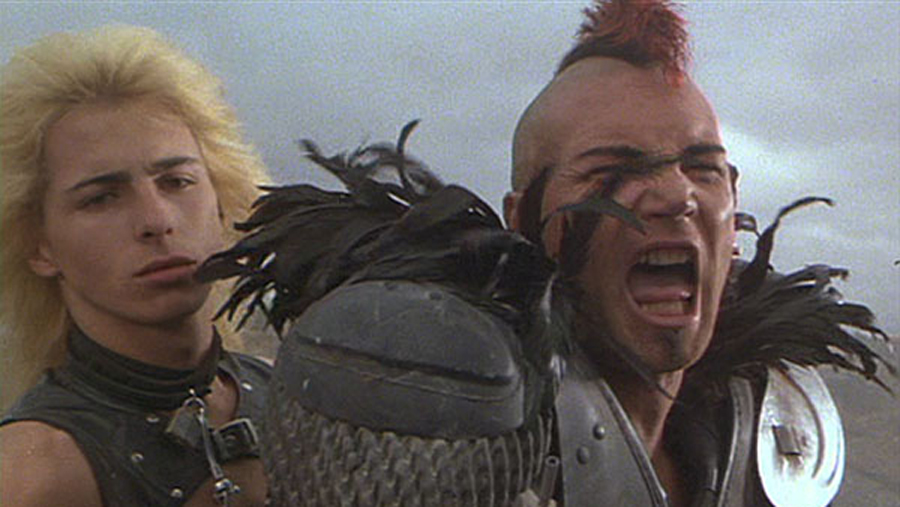Happy Saturday, everybody! With less than a week to go until Fury Road hits, I am continuing on with my Mad Max retrospective with a look at 1981's sequel, Mad Max 2: The Road Warrior. Buckle up, because the crazy really gets turned on high in this one.
After the events of Mad Max, Max is aimlessly roaming the desert, looking for fuel for his car. He meets up with a gyro pilot (Bruce Spence) who tells him of a fortified refinery still producing gasoline, but that is under siege by a band of crazies led by Lord Humungus. If you aren't sold now, I guess you never will be.
There could hardly be a greater difference between the first and second installments of a film series. Where Mad Max had a fair level of emotional grounding driving it on, Road Warrior feels like some kind of waking hallucination. The gyro pilot was weaponized snakes as booby traps and dresses in bright yellow long johns. One of the residents of the refinery is a feral kid who wields a metal boomerang. And Lord Humungus wears a hockey mask and a leather diaper with suspenders.
Director George Miller doubles down on the spectacular stunts and crashes introduced in the first film while scaling back to almost zero any humanity that might have remained. The road sequences are really pretty awesome, all the more so because of the obvious lack of artificial effects and the terrible lack of covering clothes many of the crazies have as they jump from car to car.
All of which is, of course, what makes the film such a bizarre delight. Although we are given something of a backstory in the form of stock footage montage, there is still no real explanation for the behavior of all these riveted-leather crazies. They just are. And in a way, that's all that can really be said about this movie without straining yourself. It just exists. We could say that the film functions as a metaphor and catharsis for the grief Max feels from earlier, or that we are all just as crazy in our own way as either the dedicated refiners looking for a better life or the maniacs trying to get their gas, but statements like that just fall apart.
And so, you will either love it or not care at all. The only people reading this are the ones who care, and as such this is probably a futile exercise, but I am going to write anyway since it is rainy outside and yardwork is impossible. But if it is new to you, I really think you should give it a try. There are lots worse things you could watch this week.
Mad Max 2: The Road Warrior features Mel Gibson, Bruce Spence, Michael Preston and Kjell Nilsson, and is rated R for the same thing as the first one, only more so.
Written by Terry Hayes, Brian Hannant and George Miller
Directed by George Miller
Here's the trailer, this time without awful American dubbing.






